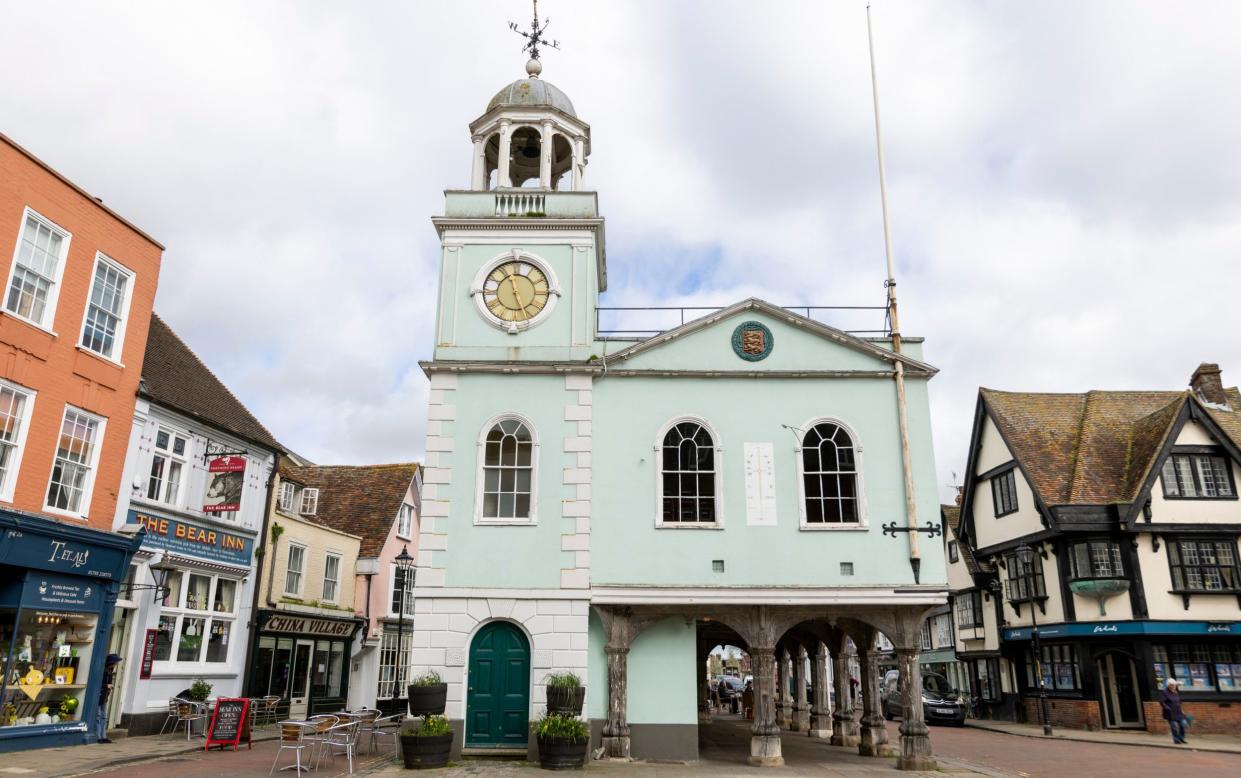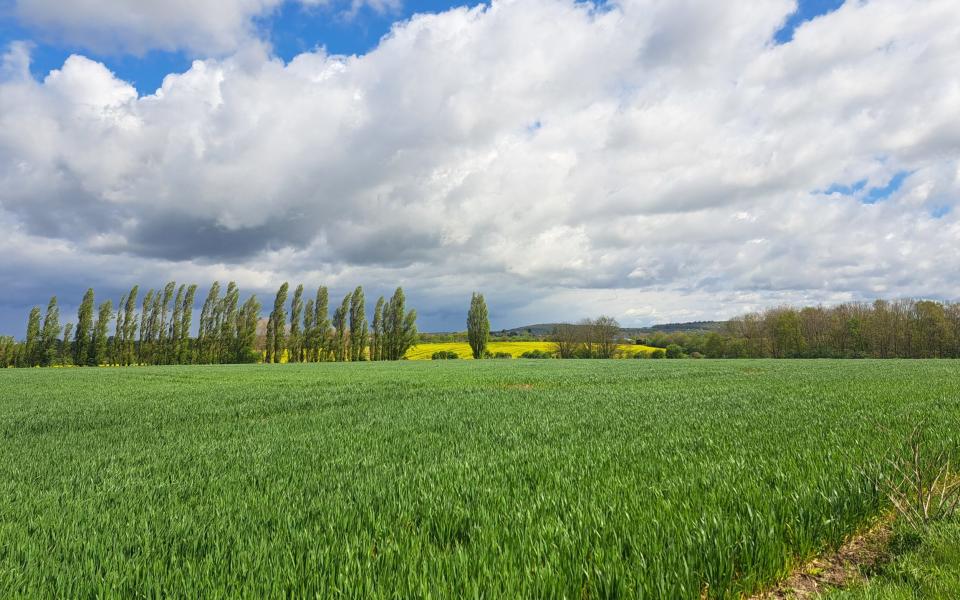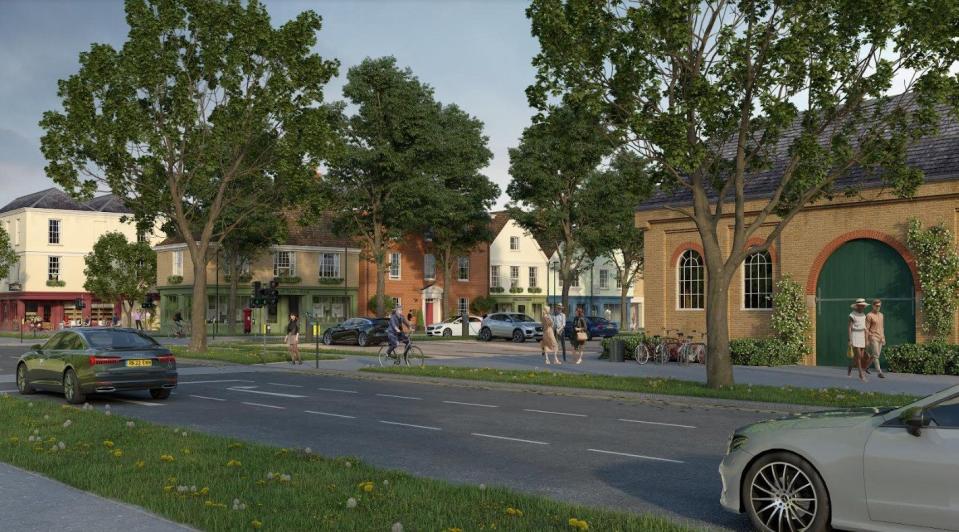‘We are an easy target’: Duchy of Cornwall under fire over plan to build 2,500 homes on farmland

The Duchy of Cornwall has come under a barrage of criticism since unveiling its vision for a sprawling 320-acre housing development in Faversham, Kent.
But Prince William and his royal estate are fighting back – defending its controversial plan to build 2,500 homes on prime farmland, stressing that it is the “right thing to do”.
“We are an easy target,” said the estate director, Ben Murphy.
Critics have accused the Duchy, which is now managed by Prince William following King Charles’ accession to the throne in 2022, of hypocrisy for drawing up a plan “totally at odds” with the royals’ stance on environmental and farming issues.
Prince William has long championed the protection of green spaces and is the founder of the Earthshot Prize which recognises environmentalism.
The majority of the site in Faversham is designated Grade 1 farmland, meaning it is among the best and most versatile agricultural land in the country. Its main crop is currently blackcurrants used to make Ribena.

Addressing the claims of hypocrisy, Murphy defended the vision. “It doesn’t sit easy with the royal estate to be developing on farmland,” he said.
“Kent unfortunately has a shortage of brownfield land, and an abundance of good quality land. When you think about the surrounding Areas of Outstanding Natural Beauty (AONB) and the Sites of Specific Scientific Interest (SSSI), [these] are the areas you really need to protect.
“Then you’re left with other swathes of land, and in this case here is a plot which provides an obvious extension to the town.
“We are an easy target bearing in mind our commitment to the countryside, but it’s about making difficult choices. We are prepared to put our head above the parapet as we see the overriding need for homes.
“I can understand why we are put at the centre of the debate, and we’re happy to try and address it. We’re trying to have those difficult conversations. We will make sure this is the most sustainable community it can be.”
The Duchy says building on rural land is not its preferred choice, but the “pressing and growing demand for more homes locally has compelled us to act”.
Such arguments have failed to win over local campaign groups and dozens of objectors who fear the loss of farmland will come at “disgraceful expense to our nation’s food security for centuries to come”.
In an objection letter, Faversham resident Christopher Taylor said: “Clearly this is totally unacceptable and if approved would allow all other developers to say they also have the right to copy the Duchy of Cornwall and thus our food security strategy would be in tatters.”
‘We’re in for the long run’
The project will increase Faversham’s 20,000 population by more than a quarter. Estate managers are confident the scheme will go some way to addressing the borough’s “drastic” lack of housing, yet resident Lesley Ashby is far from convinced. In an objection letter, she stresses that the homes are “guaranteed to spoil the balance of our existing historic market town”.
“A project like this would be better placed where they are desperate for levelling up rather than enticing more people from London to an overcrowded Kent,” she said. “All over Kent, new developments are popping up like mushrooms.”
The Duchy first mooted its housing intention for the site in 2018 before spending years tweaking and refining the bid. If approved, the “urban extension” would be the royal estate’s third large-scale development following Poundbury, in Dorset, and Nansledan, Cornwall.
Around 150 homes are poised to be built per year, with the final phase starting in 2042. Of the 2,500, 35pc will be classed “affordable”, the minimum margin outlined in government policy.

Details of the scheme show painted markings on the estate’s 20mph road network will be “kept to an absolute minimum” to prevent visual clutter, fencing will be minimal to ensure the space “feels open”, and houses will be built in Georgian and Victorian style.
The town’s cricket ground will relocate to the site, a new primary school will open, and a seven-metre-high wooded embankment will work as a buffer against the noise from the M2.
Despite building on greenfield land, the Duchy promises to boost biodiversity by creating meadows, allotments and orchards, where in place of prime agricultural farmland, sculptures of wooden sheep appearing to graze will be dotted across grassland.
“Through our sustainable stewardship outlook we want to be exemplary,” Murphy said.
“We aren’t like developers who build and then leave, we are in it for the long-run and will work to see the community thrive.”
The Duchy aims to create one job for every house built, with new shops and commercial space planned.
As for wastewater management, all sewage will be processed and cleaned on-site. Solid matter will be saved for fertiliser, while cleansed greywater (drained water from sinks, showers and washing machines) is to be piped back to homes in a secondary supply. This can then be reused for toilet flushing and white goods.
“Excess water is becoming an ever-increasing issue across the country and this system provides a way of tackling this”, the Duchy says in its proposals.
‘Walkable community vision is naive’
The royal estate envisages creating a “walkable community” by having amenities and greenspaces on resident’s doorsteps. In doing so, it hopes to generate 20pc fewer car trips compared to projects of a similar size.
The new homes, however, will be up to 1.6 miles away from the town’s train station, sparking fears from objectors that the “lack of connectivity will result in car-borne driving habits”.
Opponent Mark Gilmartin wrote in an objection letter that the walkable ambition is “naïve” and “in all likelihood, erroneous and disingenuous”.
Critics claim the scheme will also put further strain on top of junction 7 of the M2, one of the most notorious traffic pinch points in Kent, but the Duchy believes the impact will be minimal.
Murphy said: “Upon completion the development will only add 100 cars a day to the junction, which is nothing compared to its capacity. The truth is, it’s at capacity right now, and our scheme will have very little impact. So it’s in need of a bigger upgrade.”
That upgrade is due to come in the form of government cash in the coming years, with the junction earmarked for money saved from scrapping the northern leg of HS2.
A planning application for the first phase of 261 homes in Faversham is due to be decided on by Swale councillors in the coming months, with work poised to begin soon after.
For Murphy, the royal estate’s intention is clear: “This is a wonderful town with rich heritage. We’re going to pay homage to it and respect its identity, but we also intend to bolster Faversham economically and socially by working with the community. We want to absolutely deliver local housing needs.”
Recommended
The English high street: Finally, Faversham is the town that got it right

